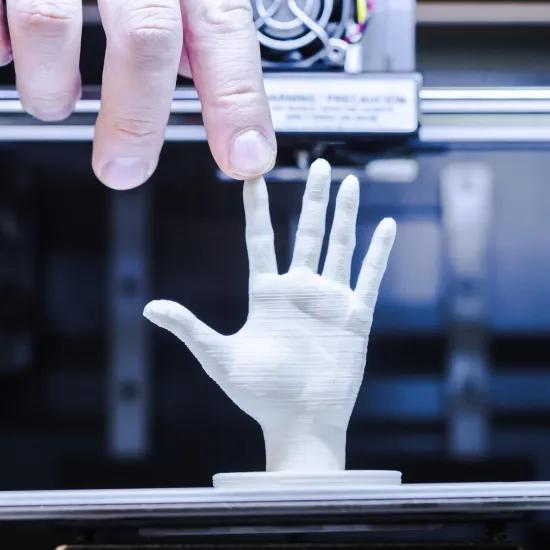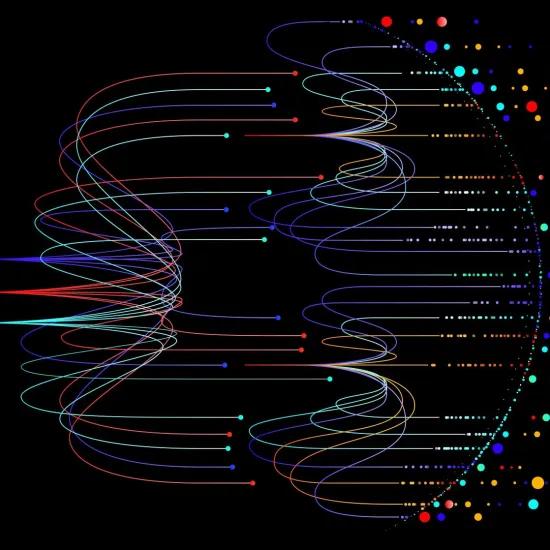Can using AI improve your CAM programming?
Artificial Intelligence is ubiquitous. We are confronted every day with AI applications in customised advertising, camera surveillance and electronic navigation – and also in manufacturing industry. Since the breakthrough of tools such as ChatGPT, many companies are wondering whether they can also use AI to help people program machines. That is why we have given some interesting examples of the use of AI in CAM programming in the overview below. Developments are happening so quickly, in fact, that this article may be out of date at the time it is published.
Support for NC code generation
Feature recognition
One of the earliest applications of AI in CAM programming was the use of feature recognition. Feature recognition is a tool that uses mathematical operations and formulas - and sometimes neural networks - in the background.
Nowadays, almost every CAM package has some functionalities that make it easier to automatically recognise holes, contours or pockets from 2D or 3D drawings. Once the company has fed the software package with standard machining strategies for such features (tools, cutting parameters, etc.), this automatic recognition can greatly speed up programming. The piece, however, still needs to be programmed from a standard library that can be built up.
Machining sequence and tools
In the next step, you can then use AI tools that also look at the product itself and the associated strategies, such as CAM Assist from CloudNC. This tool (similar to Microsoft Copilot) offers AI support for not only recognising features but also for selecting tools and an editing sequence. The plug-in is already available for several well-known CAM packages and is also in development for other packages. Esprit also has an AI Engine running in the background that suggests process steps.
As with any AI support, it is advisable to look at this critically as a user and never just blindly follow the proposed idea.
Large Language Models
People are also exploring the use of ChatGPT and other LLMs (Large Language Models) such as Gemini or Llama2 to create NC programs. For example, in the older (free) version of ChatGPT you could call up a simple code with a prompt. But it is far from self-evident how to represent a product properly in a textual description. The new (paid) version is multimodal and can be fed with drawings in, for example, PDF form. That offers more potential.
We nevertheless urge caution. The language models available today are clearly based on training data that includes NC programs. But they remain language models. Something could still happen that leads to a (fatal) crash of the machine. Furthermore, it is doubtful that you will get the most productive outcome this way. Companies can make a difference by looking for the most efficient strategies themselves. These will not be found in the average freely available language model.
In addition, you should pay attention to machine-specific properties. Machine installations often have features that are tailored to the needs of the customer. It is dangerous to let loose a general model on that. You will find a similar problem with post-processors, which are often custom-configured for the client.
For simple features, language models can generate pieces of code that are effective with some refinement, such as selecting the right tool. Naturally, you will mainly make a difference if such models can also support complex decisions, and we’re not there yet. However, technology does not stand still, and we can certainly expect progress in the coming years. Do you want to get started with AI today, or have already started? Always simulate your programs before you execute them.
Support in making choices
In addition to writing pieces of code, AI can also help the programmer make choices. For example, Siemens offers NX AI Assisted Object Editing, a tool that can predict parameters based on the previously programmed settings. The predictions are based on previous occasions when the user modified a particular operation.
Machining Cloud can help you choose tools for a specific operation. That is a slightly older platform, which makes suggestions based on AI. It is becoming increasingly integrated with major CAM packages.
Troubleshooting support
Today, experiments are also being conducted using LLMs to solve problems. For example, because of its integration with the Internet, GPT-4 is a powerful search engine for finding solutions to error messages or codes. You can also supplement the training data it uses with the manuals for a machine park or CAM package. By doing this, you know that the answers generated come from the correct training data.
The advantage of these types of tools is that operators or programmers can find solutions quickly and - sometimes literally - in their own language.
Conclusion
The use of AI in CAM operations is on the rise and is already being used in the background in various packages. It can be especially useful in repetitive operations, where AI recognises certain aspects (shapes, common settings, etc.) and makes a suggestion to use them. AI can therefore significantly accelerate the programming of easily recognisable work. However, you should always double-check these suggestions, because bad choices can have major (negative) consequences on the production floor (think, for example, of collisions).
Companies can make a difference mainly in situations where creative intelligence is required. When programmers or operators put their minds to it, they often outperform the average predictions of AI models.
|






